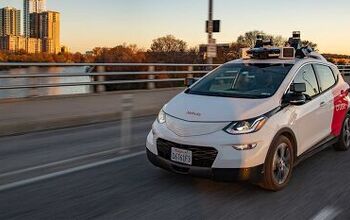Question Of The Day : What If You Could Resurrect A Dying Or Dead Brand?
I made my first small fortune in this business selling old Volvos.
I started way back in the mid-2000‘s when I got downright militant about outbidding anyone on an older rear-wheel drive Volvo. In one year, 2007 to be exact, I managed to buy at least one Volvo every year from 1983 all the way to 2004.
I loved the Volvo brand as their rear wheel drive cars represented the perfect mix of comfort, safety and functionality. The discontinued 240, 740 and 940 were insanely easy to sell and cheap to buy; especially the wagons.
These Volvos usually had a history of conservative owners who took their cars to the dealership or Volvo specialized shops for service. Repairs were easy and reasonable thanks to long model runs and parts that were as common as kudzu at any Georgia junkyard.
The used car side of the Volvo brand represented a big fat target where young families, hipsters, Camry-oriented shoppers, and the still common Brick enthusiast could all find a Volvo worth keeping. I followed that tune of demand and soon became a daily reader at Brickboard, Swedespeed, and several other well known sites for Volvo aficionados. I was hooked.
Then I became unhooked.
The seeds of Volvo’s destruction started out as an opportunity for me. Owners began to trade in Volvo S70’s and V70’s from 99′ upwards due to a malfunctioning electronic throttle module. At the sales I would see these vehicles being sold AS/IS, buy them ridiculously cheap, and then take them to the Volvo dealer to get their software upgrade. Eventually Volvo did the right thing by extending the coverage to 10 years and 200,000 miles. However, as Volvos began to develop other issues such as lifetime fluids that weren’t so, and parts failures that were as cheaply made as they were expensive to fix at the dealerships, the marketability of these vehicles nosedived to the point of near irrelevance.
The Volvo S40 was a world-class blunder. The Volvo S60 and S80 were left to rot on the vine of Ford’s neglect along with the V70 and C70. The Volvo XC90 may have represented the brand’s only solid hit for the entire decade as the MBA marketeers at the Premier Automotive Group decided to make Volvo into a downright ridiculous alternative to BMW.
Volvo wasn’t alone in the quixotic pursuit for a more ‘upscale’ brand identity. Oldsmobile was positioned as an import fighter. Mercury tried to become a premium brand as well, and marketed heavily towards women, while Lincoln redefined American luxury in a way that no one outside of Dearborn could quite understand.
The list of failed brands stretches long since the Y2K era. Plymouth. Isuzu. Saturn. Hummer. As proof of their deadness in the retail marketplace, most independent dealerships that specialize in financing won’t even buy these brands… along with Volvo, Mercury and Lincoln.
You can’t sell a dead brand, unless you were maybe a successful overseas manufacturer trying to crack the American market. Or maybe the CEO of Ford or GM. Let’s assume that the perfect world exists. A place where you could choose your brand and launch your products without worrying about money. Consider yourself old GM, a newbie at Tesla, whatever you like.
What brand would you choose to resurrect?
More by Steven Lang
Latest Car Reviews
Read moreLatest Product Reviews
Read moreRecent Comments
- Analoggrotto Does anyone seriously listen to this?
- Thomas Same here....but keep in mind that EVs are already much more efficient than ICE vehicles. They need to catch up in all the other areas you mentioned.
- Analoggrotto It's great to see TTAC kicking up the best for their #1 corporate sponsor. Keep up the good work guys.
- John66ny Title about self driving cars, linked podcast about headlight restoration. Some relationship?
- Jeff JMII--If I did not get my Maverick my next choice was a Santa Cruz. They are different but then they are both compact pickups the only real compact pickups on the market. I am glad to hear that the Santa Cruz will have knobs and buttons on it for 2025 it would be good if they offered a hybrid as well. When I looked at both trucks it was less about brand loyalty and more about price, size, and features. I have owned 2 gm made trucks in the past and liked both but gm does not make a true compact truck and neither does Ram, Toyota, or Nissan. The Maverick was the only Ford product that I wanted. If I wanted a larger truck I would have kept either my 99 S-10 extended cab with a 2.2 I-4 5 speed or my 08 Isuzu I-370 4 x 4 with the 3.7 I-5, tow package, heated leather seats, and other niceties and it road like a luxury vehicle. I believe the demand is there for other manufacturers to make compact pickups. The proposed hybrid Toyota Stout would be a great truck. Subaru has experience making small trucks and they could make a very competitive compact truck and Subaru has a great all wheel drive system. Chevy has a great compact pickup offered in South America called the Montana which gm could make in North America and offered in the US and Canada. Ram has a great little compact truck offered in South America as well. Compact trucks are a great vehicle for those who want an open bed for hauling but what a smaller more affordable efficient practical vehicle.


































Comments
Join the conversation
International harvestor of course! Also have a well known love for Hummer, so that as well.
Nash, Pontiac, Plymouth, Oldsmobile, Mercury, Mazda truck - vehicles I've owned over the past 60 years that went bye bye and I miss!